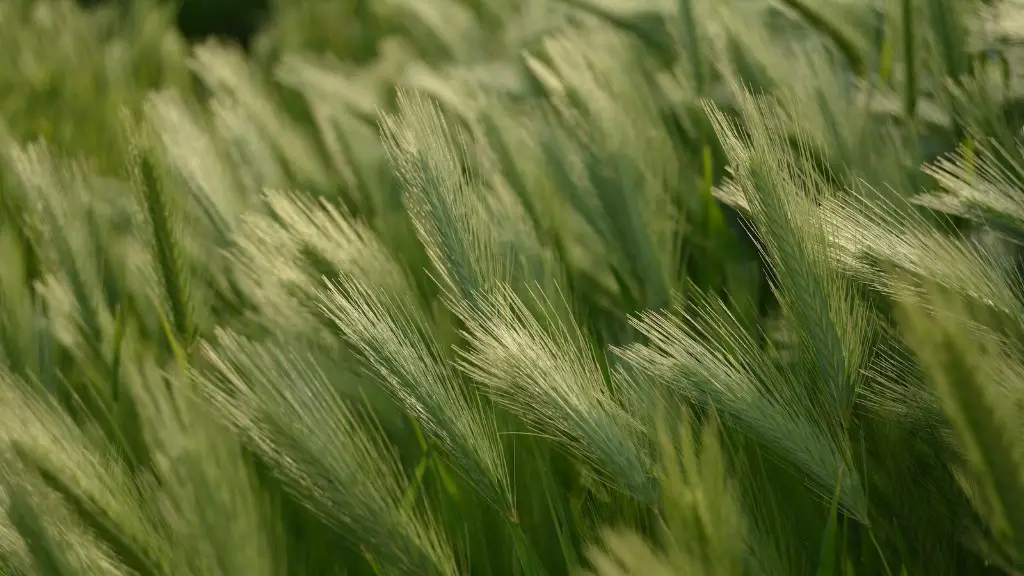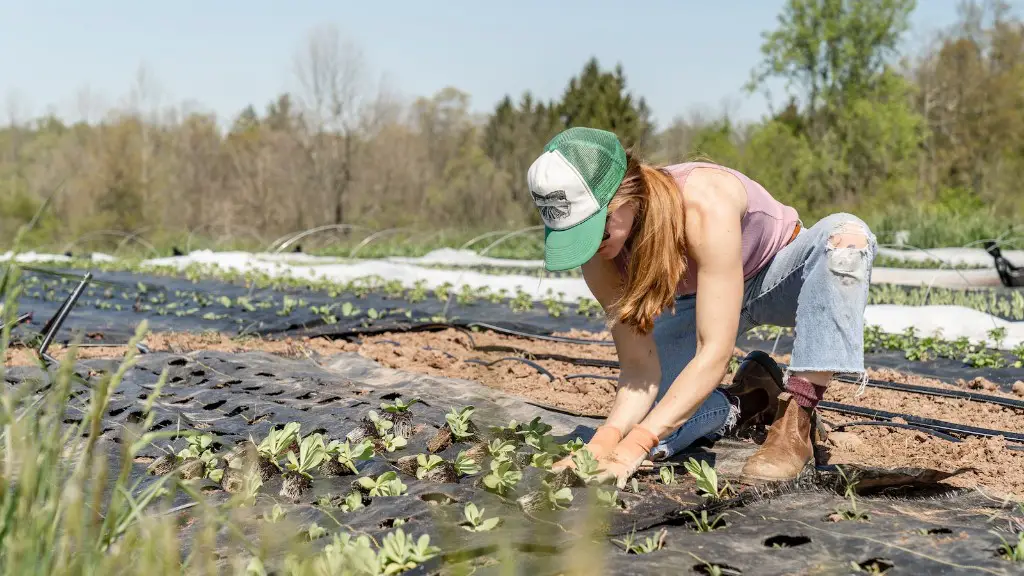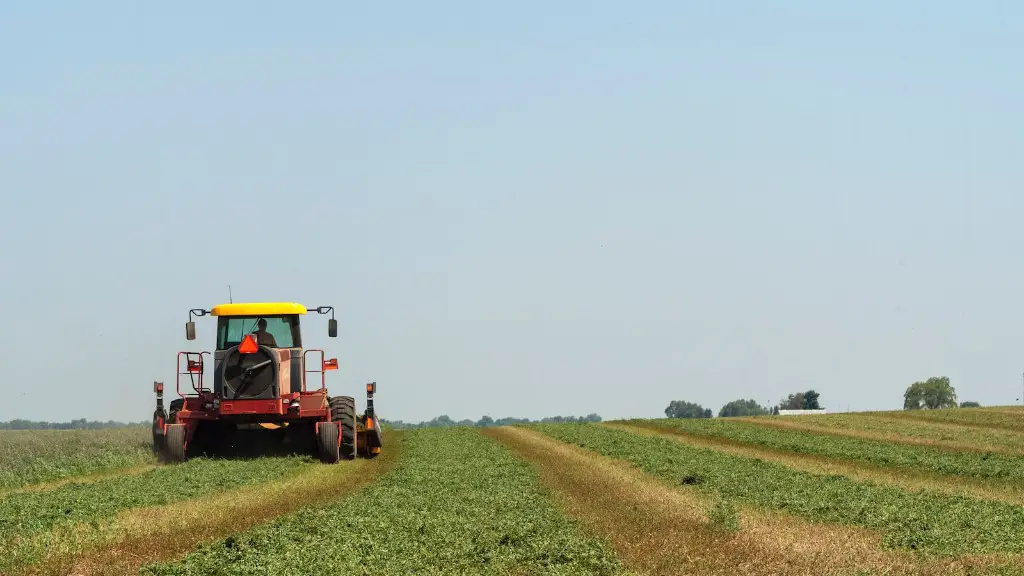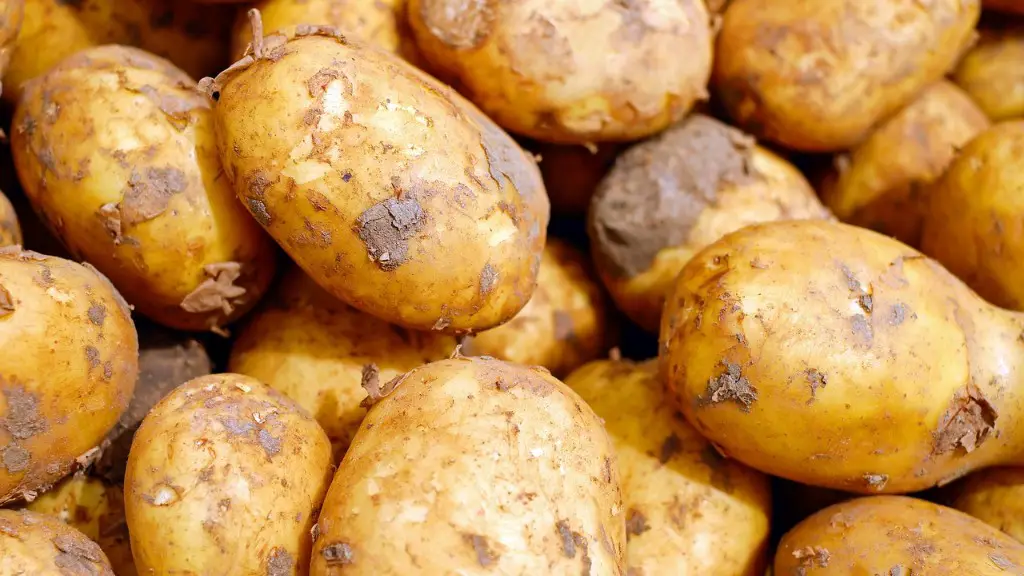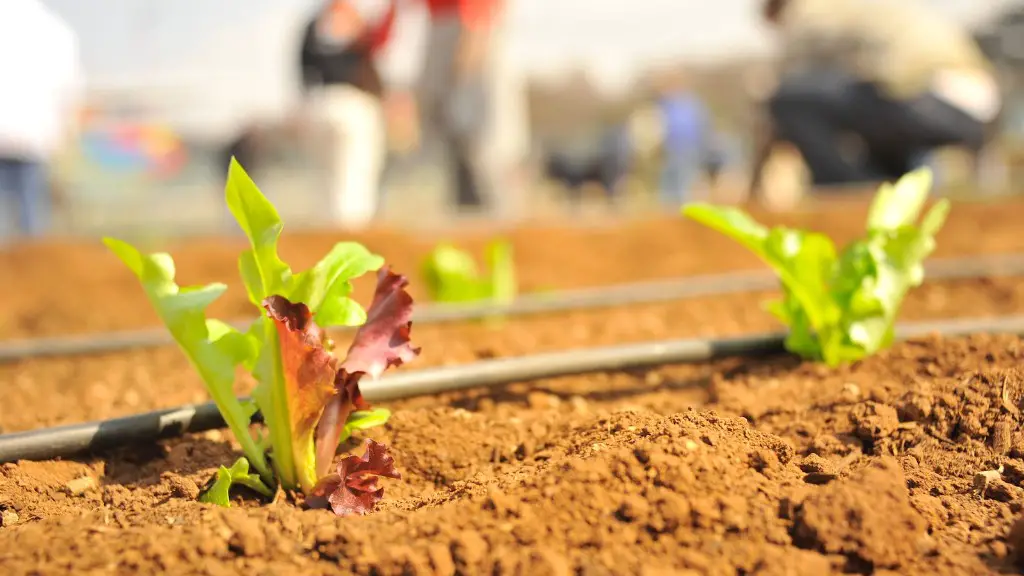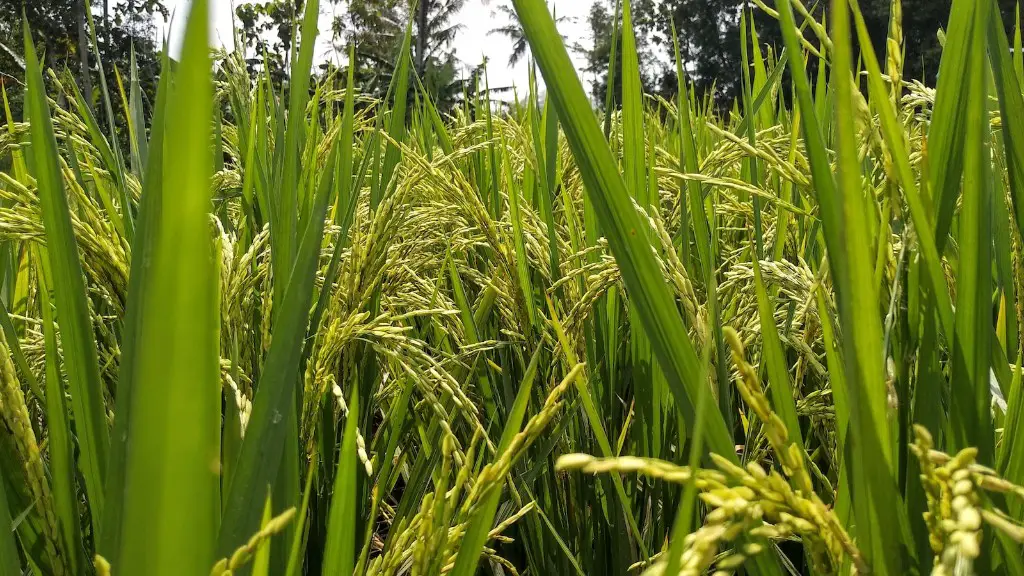Loss of biodiversity can have a number of effects on agriculture, including reducing the stability of ecosystems, the productivity of ecosystems, and the resilience of ecosystems to environmental change. Additionally, loss of biodiversity can lead to the loss of key ecosystem services, such as pollination and pest control, that are essential for the maintenance of agricultural systems.
The loss of biodiversity affects agriculture in a number of ways. First, it reduces the number of species available to provide pollination services. This can lead to reduced crop yields and increased costs for farmers who have to resort to artificial pollination. Second, the loss of biodiversity can lead to the loss of key ecosystem services that are essential for agriculture, such as soil formation and nutrient cycling. This can result in degraded agricultural land and decreased crop productivity. Finally, the loss of biodiversity can also increase the likelihood of agricultural pests and diseases, as well as weeds, invading and damaging crops.
How does biodiversity affect agriculture?
Biodiversity plays an important role in agriculture because it provides the raw materials for food production. Different types of crops have different levels of resistance and susceptibility to pests and diseases, so a diverse crop population is more likely to have at least some plants that can resist any given pest or disease. This resistance is important for food security, as it helps to ensure that crops can be harvested even in the face of pests and diseases.
Biodiversity in domesticated crops and livestock is important for many reasons. First, it ensures there is a large gene pool for traits like disease resistance. Second, it helps protect our food supply from threats like climate change and disease. Growing only a few varieties of plants makes us vulnerable to these threats, but by diversifying our crops and livestock, we can reduce the risk.
What are the biological factors affecting agriculture
The three basic categories of factors that affect crop yield are technological, biological, and environmental. Agricultural practices, managerial decisions, and other technological factors can impact crop yield. So can diseases, insects, pests, and weeds. And finally, climatic conditions, soil fertility, topography, and water quality are all environmental factors that can affect crop yield.
Climate, soil type, slope, land tenure, market, transport, capital, and technology are all factors that can affect the distribution of agriculture. Climate can affect what crops can be grown in an area, as well as the yield. Soil type can also affect crop cultivation, as different crops prefer different types of soil. Slope can affect the type, depth, and moisture content of the soil. Land tenure can affect how land is used for agriculture, as well as access to land. Market factors can affect the price of agricultural products and the demand for them. Transport can affect the cost of getting agricultural products to market. Capital can affect the cost of inputs and the availability of credit. Technology can affect productivity and the costs of production.
What are 5 environmental factors that affect the agriculture industry?
There are many environmental factors that can influence the amount of arable land available for crops. The main ones are terrain, climate, soil properties, and soil water. Crops need space to grow, sufficient light, warmth, and moisture. Soils must be of sufficient depth with sufficient drainage, texture, and chemical and fertility properties. If any of these factors are not ideal, it can limit the amount of arable land available.
Environmental factors play a big role in the extent of crop agriculture. The main factors are terrain, climate, soil properties, and soil water. These factors determine what crops can be grown in certain areas. For example, some crops require a lot of water, so they can only be grown in areas with high rainfall. Other crops need warm temperatures to grow, so they can only be grown in tropical or subtropical regions.
What is the biggest problem in agriculture?
These two problems are interconnected, as the loss of agricultural land results in a decrease in the varieties of crops and livestock that can be produced. This is a major problem because it reduces the food security of a region, as well as the economic stability of farmers. It is important to find ways to address these problems so that agricultural land can be conserved and the variety of crops and livestock increased.
The problem of unemployment is a big one in our country. There are many reasons for this, but the most important thing is that there are not enough jobs for everyone. This is especially true in rural areas, where there are not many opportunities for work.
Waterlogging in wetland areas is also a major problem. This is because the water can’t drain away properly, and so the soil becomes waterlogged and starts to rot. This can kill plants and make it difficult for people to walk or work in the affected areas.
Salinity in arid and semi-arid areas is another big problem. This is because the water in these areas is very salty, and so it can’t be used for drinking or agriculture. This problem is made worse by the fact that these areas are often very hot, and so the water evaporates quickly, leaving behind even more salt.
Acidity in high rainfall areas is also a major problem. This is because the rain water is very acidic, and so it can damage plants and animals. This problem is made worse by the fact that these areas often have a lot of pollution, which makes the acidity even worse.
Pests are also a big problem in
What are the biggest challenges in agriculture
1) Production expenses: With production costs rising, farmers are facing pressure to increase efficiency and cut costs. What new technologies and techniques will help farmers do this?
2) Farmland markets: Farmland values have been rising in recent years, but the trend may not continue. What will happen to the market for farmland in the next few years?
3) Another year of strong farm income?: After several years of strong farm income, will this continue? What factors could impact farm income in the next few years?
4) Grain stocks: Global grain stocks are currently at their lowest levels in several years. What factors could impact grain prices in the next few years?
5) China, China, China: China is a major importer of agricultural products, and its policies can have a big impact on global markets. What factors will impact China’s demand for agricultural products in the next few years?
6) Supply chains: The COVID-19 pandemic has disrupted global supply chains. What changes will we see in the way agricultural products are sourced and distributed in the next few years?
7) The economy, obviously: The global economy is facing uncertainty in the wake of the COVID-19 pandemic
There are a number of environmental problems that arise from food production, including water use and water pollution, greenhouse gas emissions, environmental contaminants and pollutants, depletion of natural resources, and waste.
Water use and water pollution are perhaps the most significant problems associated with food production. Growing food takes a lot of water, and this water is often polluted with pesticides, fertilizers, and other chemicals. This pollutes our water resources and can lead to serious health problems for people and animals.
Greenhouse gas emissions are another major problem associated with food production. The raising and processing of animals for food generates large amounts of greenhouse gases, which contribute to climate change.
Environmental contaminants and pollutants also pose a serious threat to our environment. Pesticides, herbicides, and other chemicals used in food production can contaminate our air, water, and soil, and lead to health problems for people and animals.
Depletion of natural resources is another major problem associated with food production. Farming and livestock grazing can lead to the depletion of water resources, soil fertility, and other natural resources.
Finally, waste is a big problem associated with food production. Food production generates a lot of waste, including packaging, agriculture, and processing. This waste often
What are three environmental impacts agriculture?
Most people think of agriculture as a harmless activity that has been around since the dawn of civilization. However, agriculture actually contributes to a number of environmental issues that are causing environmental degradation. These include climate change, deforestation, biodiversity loss, dead zones, genetic engineering, irrigation problems, pollutants, soil degradation, and waste.
Climate change is one of the biggest environmental issues caused by agriculture. Agriculture is a major source of greenhouse gas emissions, accounting for about 10% of global emissions. Deforestation is another big problem caused by agriculture. Agricultural activities are responsible for around 80% of deforestation in the Amazon rainforest. This has led to a loss of biodiversity as well as an increase in carbon dioxide emissions.
Dead zones are another environmental issue caused by agriculture. Dead zones are areas of ocean where the water is so polluted that it can no longer support marine life. They are often caused by agricultural runoff, which can contain pesticides, herbicides, and fertilizers. These chemicals can lead to the growth of harmful algae, which can suffocate marine life.
Genetic engineering is another controversial issue in agriculture. This is the process of manipulating the genes of crops and animals to create new varieties that are more resistant to pests and diseases. However, there are concerns that
Agriculture is the leading source of pollution in many countries, particularly developing countries. Pesticides, fertilizers and other toxic farm chemicals can poison fresh water, marine ecosystems, air and soil. They also can remain in the environment for generations, causing serious health problems for people and wildlife. Agriculture must be better regulated to protect the environment and human health.
What are the three key challenges facing agriculture
Setting the table to address the triple challenge means creating a plan that can effectively address all three challenges at once. This will require a comprehensive and coordinated effort from all sectors of society, as well as a genuine commitment to sustainable development. Only by working together can we hope to overcome the triple challenge and build a better future for all.
The five factors of production are important to consider when thinking about farming. They are human factors (labor, capital, and technology), markets, and government. Each factor is important in its own way and the importance varies from farm to farm. For example, some farms may rely more heavily on labor while others may use more technology. It is important to consider all of the factors when making decisions about farming.
What are the main causes of decline in agricultural productivity?
The primary causes of low agricultural productivity are population pressure, unprofitable holdings, uncertain monsoons, and poor irrigation infrastructure. The subsistence nature of agriculture means that most farmers are not able to invest in improving their productivity. Soil fertility decline is another major factor, as farmers are not able to afford the inputs necessary to maintain fertility. Poor resource management and a lack of initiative are also major problems.
There are a number of solutions that could be implemented to address these issues. One is to provide farmers with more support services, such as extension services, credit, and insurance. Another is to invest in infrastructure, such as irrigation and roads. Finally, it is important to promote initiatives that help farmers improve their productivity, such as training programs and technology adoption.
Agriculture can have a major impact on the environment, both positive and negative. On the positive side, agriculture can help reduce CO2 levels, improve air quality, provide habitat for wildlife, and provide food. On the negative side, agriculture can lead to soil erosion, water pollution, contribute to climate change, and deforestation.
Final Words
The loss of biodiversity can have a negative effect on agriculture. This is because biodiversity provides key services that are essential for agricultural production, such as pollination, nutrient cycling, and pest control. When biodiversity is lost, these services are often lost as well, leading to a decline in agricultural productivity. In addition, the loss of biodiversity can also lead to a loss of genetic diversity within crops, which can make them more susceptible to diseases and pests.
Loss of biodiversity can have a number of negative effects on agriculture. One is that it can lead to a decrease in crop yield, as a result of the loss of pollinators or other important ecosystem services. Additionally, it can make agriculture more vulnerable to pests and diseases, as there is less genetic diversity to draw from to develop resistance. Finally, loss of biodiversity can also impact the quality of soil, as well as the water and other resources that are necessary for agriculture. All of these effects can have a serious impact on the food supply, and can lead to increased hunger and poverty.
